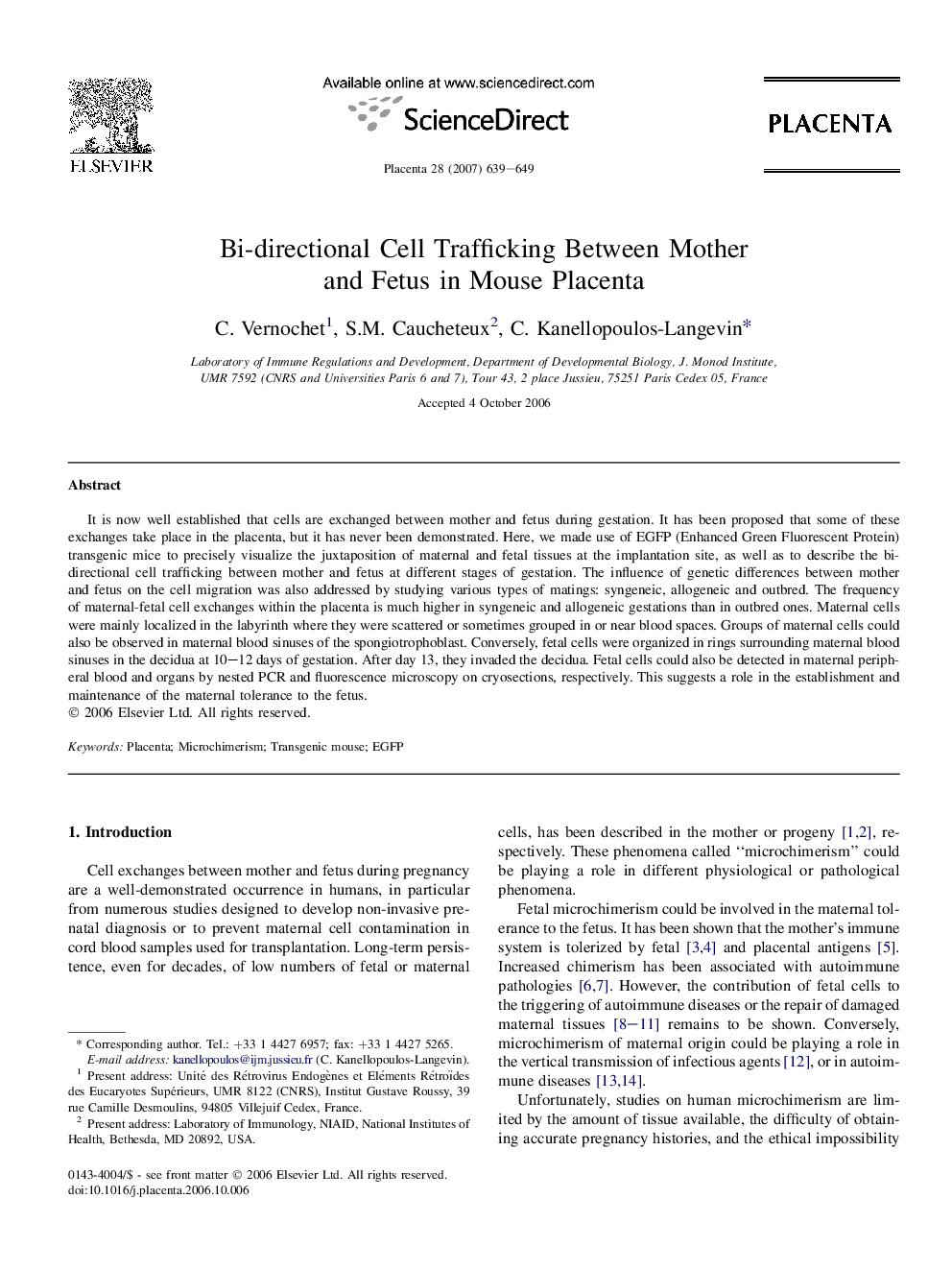| Article ID | Journal | Published Year | Pages | File Type |
|---|---|---|---|---|
| 5896253 | Placenta | 2007 | 11 Pages |
Abstract
It is now well established that cells are exchanged between mother and fetus during gestation. It has been proposed that some of these exchanges take place in the placenta, but it has never been demonstrated. Here, we made use of EGFP (Enhanced Green Fluorescent Protein) transgenic mice to precisely visualize the juxtaposition of maternal and fetal tissues at the implantation site, as well as to describe the bi-directional cell trafficking between mother and fetus at different stages of gestation. The influence of genetic differences between mother and fetus on the cell migration was also addressed by studying various types of matings: syngeneic, allogeneic and outbred. The frequency of maternal-fetal cell exchanges within the placenta is much higher in syngeneic and allogeneic gestations than in outbred ones. Maternal cells were mainly localized in the labyrinth where they were scattered or sometimes grouped in or near blood spaces. Groups of maternal cells could also be observed in maternal blood sinuses of the spongiotrophoblast. Conversely, fetal cells were organized in rings surrounding maternal blood sinuses in the decidua at 10-12Â days of gestation. After day 13, they invaded the decidua. Fetal cells could also be detected in maternal peripheral blood and organs by nested PCR and fluorescence microscopy on cryosections, respectively. This suggests a role in the establishment and maintenance of the maternal tolerance to the fetus.
Related Topics
Life Sciences
Biochemistry, Genetics and Molecular Biology
Developmental Biology
Authors
C. Vernochet, S.M. Caucheteux, C. Kanellopoulos-Langevin,
